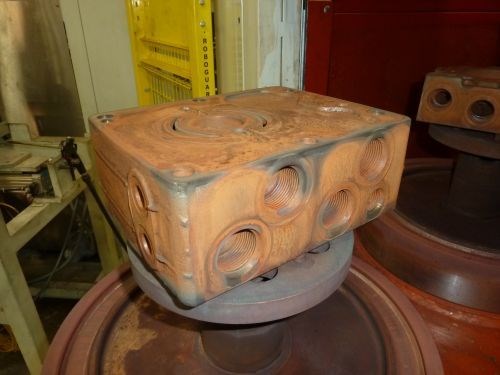Removing Burrs Can Be a Blast
Having trouble deburring the inner passages of a solid metal part? Read about how one company found the solution in Thermal Energy Machining (TEM), and is having a blast in the process.
Share







An oxidized part immediately after undergoing TEM deburring. The residue will be removed during post-washing in a neutral solution.
Lubos Hanulik, product line manager at in Ames, Iowa, is an experienced engineer. But he’s also a pretty good teacher. I discovered this while visiting with him to learn—and write an article—about a highly automated cell he helped develop using the Thermal Energy Method (TEM) to burn away burrs in the internal chambers of two components of a hydrostatic transmission. I found this to be a fascinating experience because, not only did I get to learn about TEM deburring, which ignites an oxygen/methane mix that removes burrs via oxidation, but also about the thought process behind creating a machining cell from scratch.
In short, the cell incorporates Mazak HCN 6000 horizontal milling machines, FANUC robots and a custom-designed washer and a P400 five-station TEM machine from Extrude Hone to carry castings all the way from initial machining to the finished product. The parts—an end cap and a connector—are then ready for final assembly about 50 yards away. The entire operation is overseen by a single operator.
Although you may have a completely different application, much can be learned from Mr. Hanulik’s approach to developing this cell.
Related Content
-
The Future of High Feed Milling in Modern Manufacturing
Achieve higher metal removal rates and enhanced predictability with ISCAR’s advanced high-feed milling tools — optimized for today’s competitive global market.
-
Measuring Torque, Thrust Force for Smart Drilling Operations
To monitor drilling operations for smart manufacturing solutions, torque and thrust force can be measured.
-
How to Troubleshoot Issues With Tool Life
Diagnosing when a tool is failing is important because it sets an expectation and a benchmark for improvements. Finding out why gives us a clue for how to fix it.











